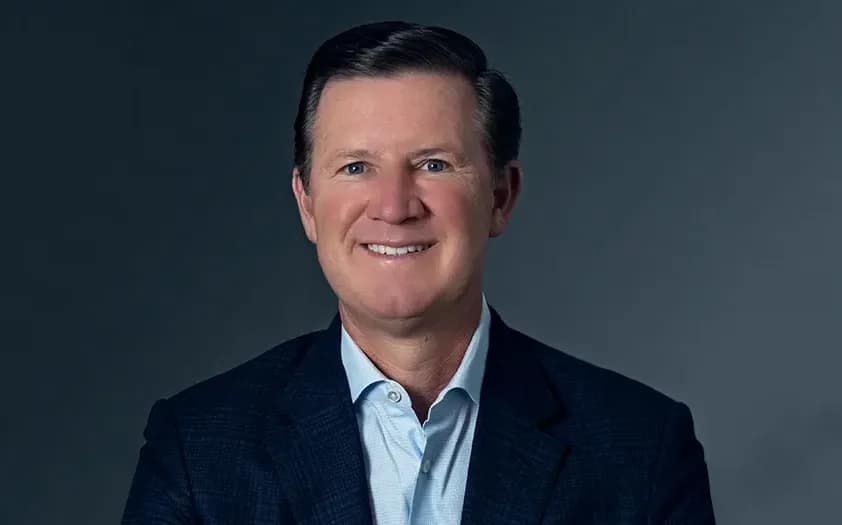Discover how Segra’s CEO, Kevin Hart, leverages his background as a CIO to develop exceptional IT leadership teams and foster a culture of success.
TWC – Kevin Hart’s ascent from CIO to CEO at Segra, a prominent independent fiber network company, is an inspiring tale of perseverance and mentorship. His story exemplifies how technology leaders can leverage their technical prowess and strategic acumen to propel businesses forward. In a recent episode of the Tech Whisperers podcast, Hart shared insights into his leadership journey, principles, and dedication to nurturing future CIOs and technology leaders.
Following the podcast, we had an exclusive conversation with Hart, where he delved deeper into his approach to leadership development, building top-notch IT teams, and fostering a high-performance, high-engagement culture. Here’s an excerpt from our discussion:
With your successful track record in developing leaders, what core values guide you?
First and foremost, having a clear vision is crucial. Effectively communicating the image in ways that resonate with individuals is critical, whether through verbal, graphical, or experiential means. Another critical aspect is understanding the company’s core business, how it generates revenue, and the connections with customers, employees, and communities. Translating this understanding into individual roles and helping employees contribute to the company’s success is essential. This philosophy is central to CIO University and my leadership approach, providing a comprehensive understanding of how the company operates.
Teamwork is vital. Creating an environment that encourages collaboration, rewards teamwork, and facilitates the sharing of best practices is essential because most functions are interdependent. Belief in what you’re doing and perseverance are critical. Overcoming challenges, setbacks, and doubts is part of the journey. Honesty, trust, and transparency are equally important. Being open about what you know and don’t know and taking steps to bridge those gaps is essential. Lastly, fostering professional growth and recognizing individual achievements is vital. It’s not always about monetary rewards; it can be through recognition, new opportunities, or making employees feel valued within the team.
What advice do you have for CIOs seeking to transform their teams and foster teamwork?
As a leader, it starts with believing in the group and setting an optimistic tone. Realism should be intertwined with optimism. Acknowledge areas that need improvement and develop strategies to become the best in class. Invest time, make necessary improvements, and engage stakeholders to ensure progress. Celebrate minor victories along the way while maintaining focus on the bigger goals. Overcoming hurdles requires a strong belief in the team’s potential. This collective belief, combined with passion, perseverance, and a winning culture, fosters success.
How do you create a culture where people can thrive and do their best work?
We hold weekly cross-functional meetings with top leaders, discussing key performance indicators, successes, and challenges. By actively participating, learning, and bringing solutions to the table, leadership demonstrates unity and commitment to achieving shared goals. Modeling the behavior we expect from our employees fosters teamwork, camaraderie, and a can-do spirit. Employees should feel supported rather than compelled to safeguard their interests. Communication, openness to feedback, and valuing input from all team members contribute to a great workplace.
Why did you invest in leadership development and CIO University?
Effective leadership relies on the team’s capabilities. In the past, many technology leaders needed more business acumen, leading to pushback on cost investments. We fostered understanding and better delivery to benefit both parties by bridging the gap between stakeholders and technology teams. Communication, personality types, and business acumen were critical areas of focus. Feedback from stakeholders confirmed that our team was actively listening, compromising, and finding win-win solutions that drove business growth. Investing in the team pays off. For instance, implementing the value meter initiative resulted in significant cost savings and revenue enablement. By connecting the financial aspects of the company to our team’s efforts, we demonstrated our value and contributed to the company’s overall success.
How do you approach listening before speaking as a leader?
As a consultant, the priority is solving problems for clients rather than showcasing personal achievements. Active listening and understanding clients’ needs are paramount to delivering successful solutions. Analyzing information, recognizing patterns, and considering multiple scenarios before speaking helps ensure the best outcomes. Additionally, I emphasize that my ideas are starting points open to improvement, discouraging blind adherence to my suggestions.
What advice would you give CIOs and IT leaders to make a significant impact?
From my vantage point as CEO, I now realize the complexities of the CIO role. To navigate challenges effectively, CIOs must act as consultants, balance financial priorities, and protect their teams from burnout. A clear focus on solving specific business problems, effectively translating technical jargon into business language, and acting as a partner and consultant enable IT leaders to make a substantial impact.
Kevin Hart’s leadership journey serves as an inspiration for aspiring IT leaders. His dedication to developing successful IT leaders, building top-notch teams, and fostering a culture of excellence exemplifies the transformative power of visionary leadership. Technology leaders can steer their organizations toward unprecedented success by embracing these principles.

